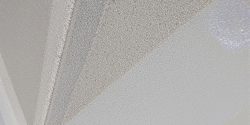The Benefits of Concrete Sealants in High Moisture Areas
When we think about keeping our homes and buildings in good shape, especially in places that get a lot of rain or humidity, concrete sealants might not be the first thing that comes to mind. But honestly, they are super important. We’re talking about a simple step that can save a lot of headaches and money down the road. Let’s look at why using concrete sealants in wet spots is such a smart move for protecting what we build and even making our indoor spaces better.
Key Takeaways
- Sealants protect structures from water damage, preventing expensive repairs and making things last longer, similar to how roof sealant benefits a home.
- Using sealants helps keep indoor air clean by stopping mold and makes surfaces less slippery, which is good for safety.
- Concrete surfaces last much longer with sealants, handling cold weather and everyday wear better.
Protecting Structures from Water Damage
Preventing Costly Repairs with Roof Sealant Benefits
As homeowners, we know that water damage can be a real headache. It’s not just about the immediate mess; it’s about the long-term consequences for our homes and wallets. Roof sealants are a simple yet effective way to prevent water from seeping into the structure, which can lead to rot, mold, and structural instability.
Think of it this way: a little investment in sealant now can save you from major repair bills down the road. We’re talking about potentially avoiding replacing entire sections of your roof or dealing with interior damage.
Here’s a quick look at how roof sealants help:
- They create a waterproof barrier.
- They protect against leaks and water penetration.
- They extend the life of your roof.
Enhancing Durability in Humid Environments
Humid climates present unique challenges to concrete structures. The constant moisture can accelerate deterioration, leading to cracks and other forms of damage. Concrete sealants act as a shield, preventing water from penetrating the concrete and causing it to weaken over time. We’ve seen firsthand how sealants can make a huge difference in the longevity of concrete surfaces in areas with high humidity. It’s not just about preventing water damage; it’s about preserving the integrity of the structure.
Consider these points:
- Sealants reduce the absorption of water.
- They minimize the risk of cracking and spalling.
- They help maintain the structural integrity of concrete in humid conditions.
Improving Indoor Air Quality and Safety

We often overlook the less obvious benefits of concrete sealants, especially when it comes to our health and safety indoors. It’s not just about keeping the structure sound; it’s also about creating a healthier living environment for everyone.
Mitigating Mold and Mildew Growth
Mold and mildew thrive in damp environments, and concrete, being porous, can easily absorb moisture. This creates the perfect breeding ground for these unwanted guests. Once mold takes hold, it can release spores into the air, leading to respiratory problems, allergies, and other health issues. Concrete sealants act as a barrier, preventing moisture from penetrating the concrete and thus inhibiting mold and mildew growth. This is especially important in basements, bathrooms, and other areas prone to high humidity.
Reducing Slip Hazards on Wet Surfaces
Wet concrete can be incredibly slippery, posing a significant slip and fall risk. This is especially true in areas like garages, patios, and walkways. Applying a concrete sealant can improve the traction of the surface, even when wet. Some sealants even contain additives that further enhance slip resistance. We’ve seen a noticeable decrease in accidents after applying sealants with anti-slip properties, especially around pool decks and entryways. It’s a simple step that can make a big difference in preventing injuries.
Using concrete sealants is a proactive measure to protect our families and ourselves from potential health hazards and accidents. It’s an investment in a safer and healthier living space.
Extending the Lifespan of Concrete Surfaces
Concrete is tough, but it’s not invincible. Especially in places with lots of moisture, it needs some help to last. That’s where sealants come in. They’re like a shield, protecting the concrete from all sorts of damage that can shorten its life. Let’s look at how they do it.
Resisting Freeze-Thaw Cycles
One of the biggest enemies of concrete is the freeze-thaw cycle. Water gets into the concrete, freezes, expands, and cracks the material from the inside. It’s a slow process, but over time, it can really weaken the structure. Sealants prevent water from getting in, so there’s nothing to freeze and expand. Think of it like this:
- Sealants block water absorption.
- They reduce internal pressure during freezing.
- They minimize cracking and spalling.
Minimizing Abrasive Wear and Tear
Concrete surfaces, especially floors, take a beating from foot traffic, equipment, and just general use. This abrasion wears down the surface over time, making it dusty and uneven. Sealants create a protective layer that resists this wear and tear. It’s like adding a tough skin to the concrete.
We’ve seen firsthand how sealants can extend the life of concrete in our projects. It’s not just about preventing cracks; it’s about keeping the surface smooth and strong for years to come. This reduces the need for repairs and replacements, saving time and money in the long run.
Here’s a simple comparison:
| Feature | Unsealed Concrete | Sealed Concrete |
|---|---|---|
| Wear Resistance | Low | High |
| Dusting | High | Low |
| Maintenance Needs | High | Low |
Conclusion
So, as we’ve talked about, putting a good sealant on concrete in wet places just makes sense. It helps keep things from getting messed up by water, which can save a lot of trouble later on. We’ve seen how it can make concrete last longer and look better, even when it’s always wet. Thinking about the long run, a little work now with the right sealant can really pay off. It’s a simple step that makes a big difference for concrete that has to deal with a lot of moisture.
Frequently Asked Questions
How long do concrete sealants typically last?
We often wonder how long a concrete sealant lasts. Generally, a good quality sealant can protect concrete for several years, sometimes even up to a decade, depending on the type of sealant we choose and how much traffic the area gets. Regular checks help us know when it’s time to reapply.
Is it hard for us to put on concrete sealant ourselves?
We’re frequently asked if applying sealant is a difficult job. For most homeowners, putting on concrete sealant is a pretty straightforward task. We need to make sure the surface is clean and dry first. Following the directions on the sealant product carefully will help us get the best results.
When is the best time for us to apply concrete sealant?
We are often curious about the best time to seal concrete. The best time for us to seal concrete is when the weather is mild and dry. We want to avoid very hot or very cold days, and we certainly don’t want rain in the forecast. This helps the sealant set properly and work its best.




